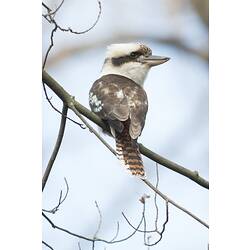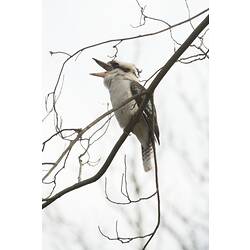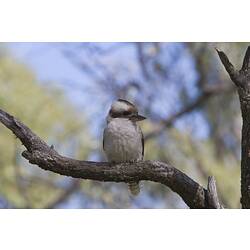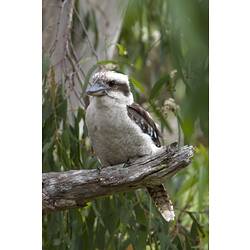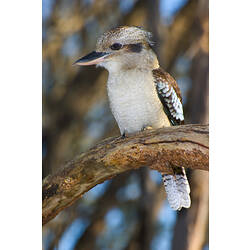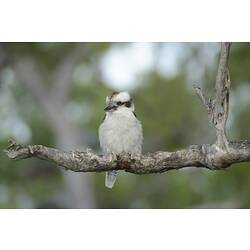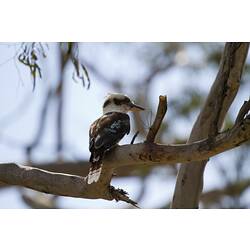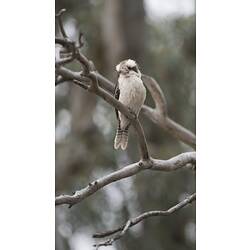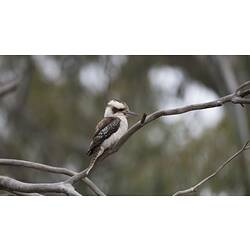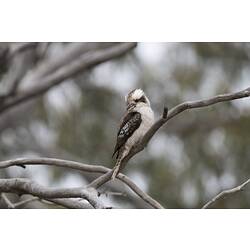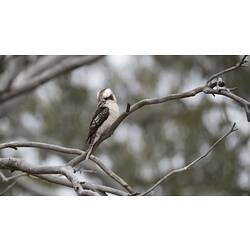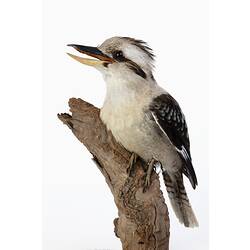General Description
Upper body dark brown, underparts white. Tail rusty brown with black stripes. Head dull white with a dark brown stripe down the centre and dark brown stripe across the face. Upper bill dark brown, lower bill white-cream. Wings brown with blue edges. Bill to tail length up to 45 cm. Call a distinctive laughing sound.
Biology
Laughing Kookaburras are one of the largest members of the kingfisher family. They are commonly identified by their characteristic laughing call, which is given as a warning to other birds to keep out of their territory. Kookaburras hunt by perching on branches and swooping down onto their prey. Small animals such as insects, worms and crustaceans are eaten whole. Larger prey such as small snakes, frogs, birds and mammals are bashed against tree branches and other hard objects before being eaten. Laughing Kookaburras form breeding pairs for life. The females lay two to three eggs in an unlined nest chamber in a tree hollow or arboreal termite mound. Both parents incubate the eggs and then both parents, as well as offspring from the previous two years, help to care for the chicks.
Distribution
Eastern and south-western mainland Australia. Introduced toTasmania and New Zealand.
Habitat
Open woodlands, forests and urban areas.
More Information
-
Animal Type
-
Animal SubType
-
Brief Id
A blue-brown kingfisher with blue edged wings and a distinctive laughing call.
-
Colours
White, Brown
-
Maximum Size
45 cm
-
Habitats
-
Diet
Carnivore
-
Diet Categories
Invertebrates, Insects
-
Endemicity
-
Commercial
No
-
Conservation Statuses
CITES: Not listed, FFG Threatened List: Not listed, EPBC Act 1999: Not listed, IUCN Red List: Least Concern
-
Taxon Name
-
Common Name
Laughing Kookaburra
-
Kingdom
-
Phylum
-
Subphylum
-
Class
-
Order
-
Family
-
Genus
-
Species Name
novaeguineae

